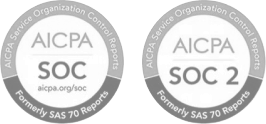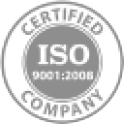EB1 vs EB2 vs EB3
Article Navigation
The U.S. immigration system offers several employment-based (EB) immigrant visa categories for foreign nationals seeking lawful permanent residence. EB1, EB2, and EB3 represent the first three preference categories under the employment-based immigration system. They differ in eligibility requirements, documentation, processing time, and the type of individuals each category targets. The preference hierarchy also determines priority dates and annual visa availability, with EB1 receiving the highest preference and EB3 the lowest among the three.
EB1 – First Preference Employment-Based Immigration
The EB1 category is designated for individuals with extraordinary qualifications or achievements, and includes three subcategories:
- EB1-A (Extraordinary Ability): Reserved for individuals who demonstrate extraordinary ability in sciences, arts, education, business, or athletics. No employer sponsorship is required. Applicants must provide evidence of sustained national or international acclaim and meet at least 3 of 10 listed criteria by USCIS (such as awards, publications, original contributions, or critical roles in distinguished organizations).
- EB1-B (Outstanding Professors and Researchers): For individuals with at least three years of teaching or research experience, recognized internationally as outstanding in their academic field. Requires a permanent job offer and sponsorship by a U.S. university or research institution.
- EB1-C (Multinational Executives or Managers): For executives or managers transferred to a U.S. branch, affiliate, or subsidiary of a foreign company where they worked for at least one of the past three years. Requires employer sponsorship and documentation of organizational hierarchy and managerial duties.
Key benefits of EB1 include exemption from PERM labor certification and faster processing due to higher priority under the immigration quota system.
EB2 – Second Preference Employment-Based Immigration
EB2 is targeted at individuals who either possess an advanced academic degree or can demonstrate exceptional ability in the sciences, arts, or business. It consists of the following tracks:
- EB2-A (Advanced Degree Professionals): Requires a U.S. master’s degree or its foreign equivalent, or a bachelor’s degree plus five years of progressive work experience in the field. A job offer and PERM labor certification are generally required.
- EB2-B (Exceptional Ability): For individuals who can demonstrate a degree of expertise significantly above the norm in their field. Applicants must meet at least three of seven criteria including academic records, licenses, letters of recognition, or salary reflective of ability.
- EB2-NIW (National Interest Waiver): Allows applicants to self-petition without employer sponsorship or labor certification if they can prove their work benefits the United States substantially. National interest is determined based on the merit and national importance of the proposed endeavor, the applicant’s qualifications, and their ability to advance the endeavor independently.
The EB2 category is often selected by scientists, engineers, healthcare professionals, academics, and researchers. While it typically has shorter backlogs than EB3, it is subject to country-based quota limitations.
EB3 – Third Preference Employment-Based Immigration
EB3 is accessible to a wider pool of workers and is often used for permanent jobs that require varying levels of education and training. It includes three subcategories:
- EB3-A (Skilled Workers): Requires at least two years of job experience or training in a skilled occupation. Employer sponsorship and labor certification are mandatory.
- EB3-B (Professionals): For individuals holding a U.S. bachelor’s degree or foreign equivalent in a field related to the job offer. The position must require a bachelor’s degree as a minimum entry-level requirement. PERM labor certification and employer sponsorship are required.
- EB3-C (Other Workers): For unskilled labor positions that require less than two years of training or experience. These positions are often in caregiving, food service, or manual labor industries. This subcategory faces the longest wait times due to higher demand and low annual visa allocation.
EB3 generally has the most lenient eligibility criteria but suffers from the longest processing times and is heavily impacted by visa backlogs, particularly for applicants from high-demand countries.
Comparative Summary
| Feature | EB1 | EB2 | EB3 |
|---|---|---|---|
| Preference Level | First | Second | Third |
| Education Required | Not required (based on extraordinary ability) | Master’s or Bachelor’s + 5 years | Bachelor’s, training, or none |
| PERM Labor Certification | Not required (except EB1-C may require internal evidence) | Required (except NIW) | Required |
| Employer Sponsorship | Not required for EB1-A | Required (unless NIW) | Mandatory |
| Self-Petition Allowed | Yes (EB1-A) | Yes (NIW only) | No |
| Processing Time | Fastest | Moderate | Longest |
| Occupation Examples | Scientists, executives, athletes | Engineers, researchers, doctors | Nurses, caregivers, laborers |
Priority Date Considerations
Because of the tiered nature of the employment-based visa system, EB1 enjoys the shortest waiting times for green card issuance due to its high preference. EB2 processing times vary depending on demand and country of origin. For countries like India and China, EB2 and EB3 can be significantly delayed due to oversubscription. EB3 has the largest pool of eligible applicants and is most affected by visa backlog.
Conclusion
The EB1, EB2, and EB3 immigrant visa categories represent distinct pathways to U.S. permanent residency, each with its own qualifications, benefits, and limitations. The appropriate category depends on the applicant’s education, work experience, occupation, and whether employer sponsorship or labor certification is feasible. Higher categories like EB1 offer faster processing and more flexibility but are difficult to qualify for. EB2 offers a viable route for highly educated or skilled individuals, particularly with the NIW option, while EB3 remains an essential path for semi-skilled and unskilled labor in demand across various industries.































 Back
Back